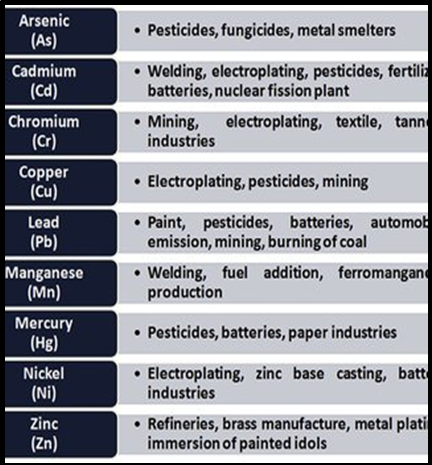HEAVY METAL CONTAMINANTS POSE HEALTH RISKS TO HUMANS AND ANIMALS
Why in the news?
- Indian Institute of Science (IISc) develops methods for removing heavy metal contaminants from groundwater.
- Collaboration with NGOs for field testing.
About the Indian Institute of Science (IISc):
- The Indian Institute of Science (IISc) is a premier public research university in Bengaluru, Karnataka, India.
- Established in 1909 with support from Jamsetji Tata.
- Recognized for advanced scientific and technological research and education.
- Offers programs in science, engineering, design, and management.
- Granted deemed university status in 1958 and Institute of Eminence in 2018.
source:researchgate
What are Heavy metals?
About Heavy metal pollution:
|




